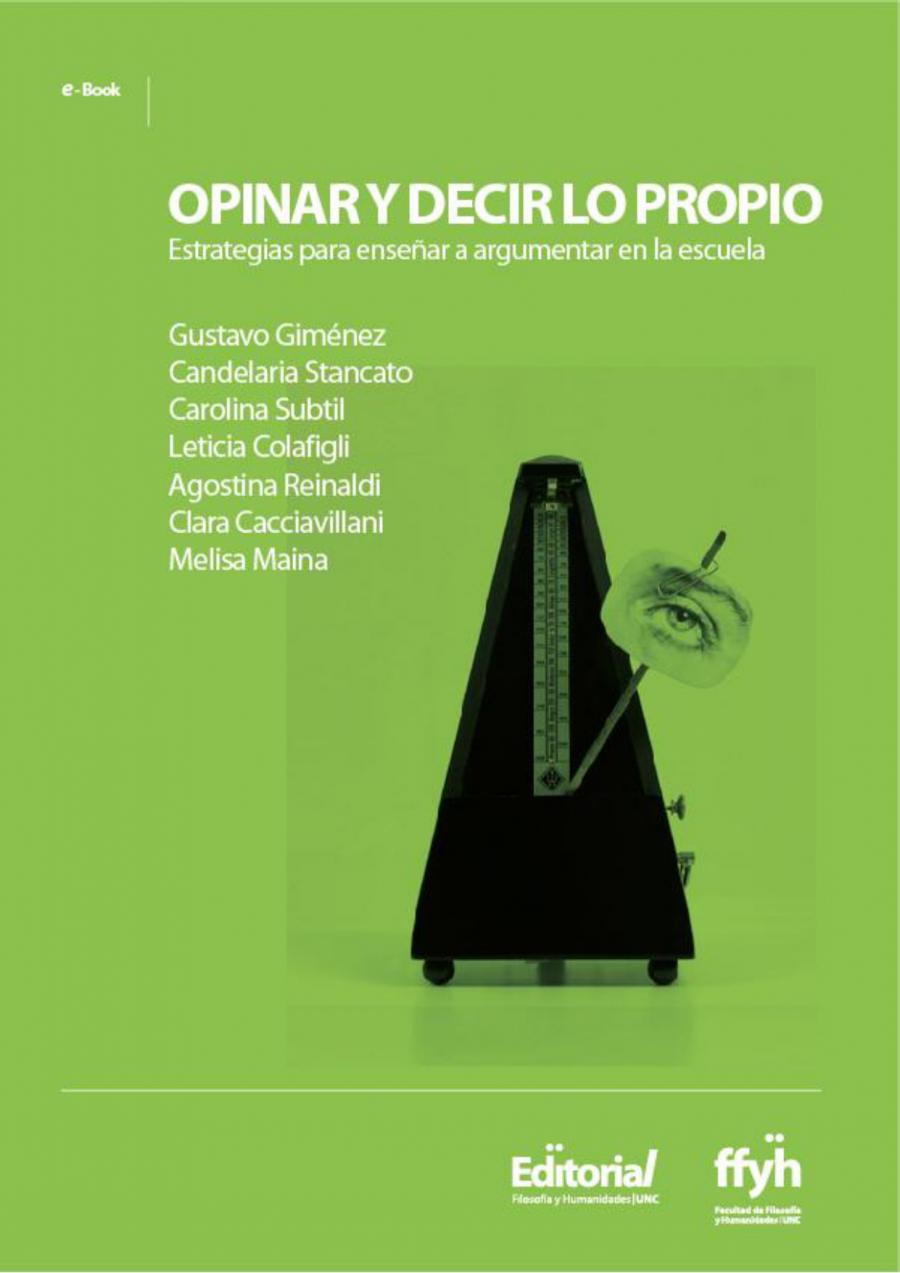Expressing opinions and speaking one's mind: strategies for teaching argumentation in school
Keywords:
discourse analysis, language, literature, argumentation (rhetoric), school texts – analysis, language teaching, writing – teaching, reading – teaching, school textbook – critical analysis, spanish language – secondary education, linguistics applied to teaching, text production, reading comprehension, ideology in school texts, argumentative discourse, critical educationSynopsis
Those who participated in the preparation of this publication are a group of professors who coordinate the Teaching Practice and Residency seminars (Humanities area) and Language Teaching I seminars for Modern Humanities teachers at the UNC Faculty of Philosophy and Humanities. In addition to the teaching work that brings them together in these spaces, they participate in a research team interested in studying, among other things, the ways in which content related to language, texts, language, or discourse is reconstructed for teaching in the language textbooks used in language classrooms and classes.
In this book, the focus is particularly on argumentation or argumentative discourse as a subject of teaching in school textbooks. It is worth highlighting three reasons that make argumentation a relevant topic in language teaching today: the apparent hegemony that studies on argumentation have gained in the field of linguistic and/or discourse studies; its relative “novelty” as an object of systematic reflection in the universe of language teaching content; and the centrality that has been given to it in the educational goals set out in official curriculum documents in this area.
These, then, are some of the ideas that motivated the concern to address and deepen the study of the teaching of argumentative discourse through school textbooks, on the one hand, and the need to design a didactic alternative in this regard to accompany the work of teachers in the classroom, on the other. Both motives make up the two main parts into which this book is organized.
The first part contains chapters 1, 2, 3, 4, and 5, with conceptual developments on argumentation and advances from different perspectives on the interpretation of the teaching of argumentation through school textbooks. The second part offers a specific teaching proposal that we have entitled “opining and saying one's own.” The title attempts to express an educational aspiration of the entire team: that the student's argumentative participation should not be the “end point” of the activity to interpret what others say and reinforce the same meanings, but rather the “starting point.” That is, to mobilize the students' own experience and words to weave them together (and confront them, why not?) with those of professional debaters (columnists, journalists, politicians, etc.).
This second part is divided into sequences. Each sequence has its own development, alternatives, and appendices with examples, texts, etc., with the idea that each teacher who reads it can implement it as is or redefine it in and for their own practice.
Chapters
-
Chapter 1. Argumentation and argumentative texts. Basic concepts.
-
Chapter 2. Teaching argumentation in school. A study based on school textbooks.
-
Chapter 3. From the textual dimension to the ideological dimension of argumentation in the didactic transposition of school textbooks.
-
Chapter 4. Argumentation production and youth representationsa study based on slogans from school textbooks
-
Chapter 5. How textbook slogans operate in the teaching of argumentationa model for critical analysis of ideology in language applied to school discourse

Downloads
Published
Categories
License

This work is licensed under a Creative Commons Attribution-NonCommercial-ShareAlike 4.0 International License.


